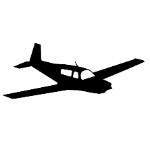Stalls and slow flight poll/discussion.
Stalls and slow flight poll.
94 members have voted
-
Members Online
- Rmfriday
- raymondscott0321
- Yetti
- MattOK
- MusicCityMooney
- Marauder
- N201MKTurbo
- Pinecone
- xkzqwh
- chrisburdzy98
- highflyer77
- DXB
- rahill
- SkyBound
- EKoS
- FlyingScot
- hypertech
- TheAv8r
- MB65E
- donkaye
- carusoam
- Peter T
- billy hellcat
- Marc_B
- Skyland
- bigmo
- varlajo
- BrentS
- 65MooneyPilot
- acekng1
- Jetdriver
- AH-1 Cobra Pilot
- NickG
- Ron McBride
- Alan Maurer
- Crawfish
- DonMuncy
- Jake@BevanAviation


Recommended Posts
Join the conversation
You can post now and register later. If you have an account, sign in now to post with your account.